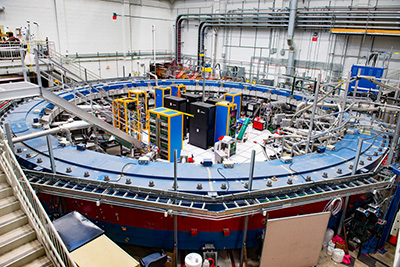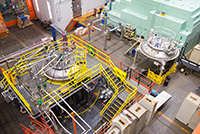Muons

Two Fermilab experiments, Mu2e and Muon g-2, will use particles called muons to search for rare and hidden phenomena in the quantum realm.
In recent years, particle physicists have increasingly turned their attention to finding evidence for physics beyond the already known building blocks of matter and subatomic forces that determine their interactions. Discoveries beyond the well-established Standard Model will help scientists answer some of the most puzzling and pressing questions about matter and our universe. What is the nature of the vacuum? Were the forces of nature combined in one unifying force at the time of the Big Bang? How did the universe change from being dominated by energy and radiation to the one we see today, made of both visible and dark matter?
Muons can help scientists address these questions. They are heavy, ephemeral cousins of the electron, living for two millionths of a second before decaying. By producing and cleverly examining the interactions of these short-lived particles, scientists will be able to make sought-after precision measurements that will bring us much closer to addressing the universe's most pressing mysteries.
Mu2e

The Mu2e experiment, currently under construction, will search for the hypothesized conversion of muons into their lighter cousins, electrons. This type of transformation occurs in other types of particles, but it has yet to be discovered in this particle family.
Muon g-2

The Muon g-2 experiment uses Fermilab's powerful accelerators to explore the interactions of short-lived particles called muons. If the properties of these particles differ from theoretical predictions, it is a sign that other, undiscovered particles are at work.
- Last modified
- 04/05/2018
- email Fermilab

